
- Football Tutorial
- Football - Home
- Football - Overview
- Football - Participating Countries
- Football - Playing Environment
- Football - Equipment
- Football - Popular Terms
- Football - Players & their Positions
- Football - How to Play?
- Football - Tournaments
- Football - Champion of Champions
- Football Useful Resources
- Football - Quick Guide
- Football - Useful Resources
- Football - Discussion
Football - Quick Guide
Football - Overview
Football is the most popular sport worldwide. It is also called "soccer" in some countries. It is an outdoor game that requires absolute athleticism as players have to hustle and run across the field with the ball throughout the game. The name of the sport was derived by the way it is played. This sport took its shape in the 18th century.
China being the mother of Football may raise a few eyebrows. In early days, this sport was played by kids in China which was later picked up by the senior fellows. Despite the origin in Asia, the sport was well received and adapted by people of Europe and South-American countries. Spain, Italy, Brazil, Argentina, and England are some of the best football playing countries. At the same time, there are international tournaments organized in Europe that many clubs participate and compete in for a prestigious cup.
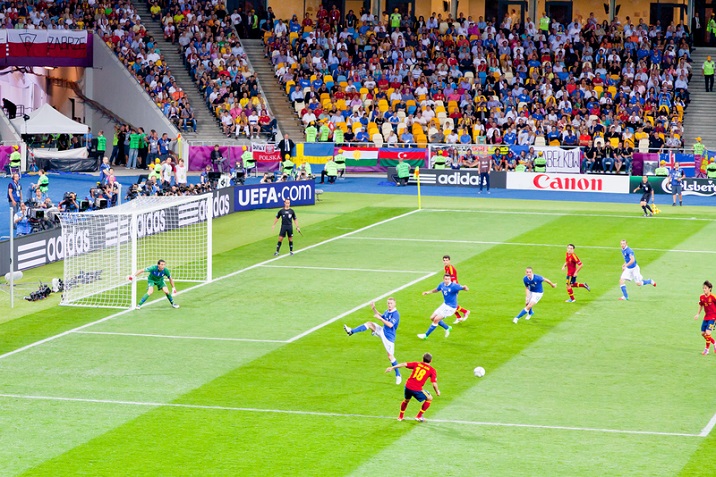
Objective
Football is played by two teams on a large rectangular shaped grass field. There are two goal posts on both ends of the breadth of the field. Both the teams vie for the ball by tackling each other and try to kick the ball into opponent’s goal post. The goalkeeper can only stop the ball with hands within a restricted area around the goal post. Rest of the players have to play by kicking the ball and passing it within teammates.
The objective of a football team is to score a goal more than their opponent and win the game. A goal is scored when the ball passes the goal line. Players can use any part of their body to score the goal but not their hands.
Team Size
Be it a national team or international club, there should be only 11 players per team on the field while playing the game. One of them is the goalkeeper, who is crucial to the success of the team. He is skilled to intercept the ball before a goal is scored by a player of the opponent team. There are additional players seated on the side as substitutes to replace on-field players. Coach is an integral part of the team who coaches every member of the team, lays plans and strategies to score goals and win matches.
Football - Participating Countries
Soccer has its roots in China; however, Africa, Middle-east, Europe, and Americas play this game with utmost love. People from these regions love the sport and follow their national teams and favorite clubs.
Japan, South Korea, and Indonesia are the other countries with national teams that have represented in international events. Indonesia is first Asian country to have qualified for World Cup. However, India has made a mark in Asian tournaments and is yet to qualify for an international tournament.
The Asian Football Confederation (AFC) is the governing body of 47 member associations. It was formed in 1954 and headquartered in Kuala Lumpur, Malaysia. Some of these are intercontinental countries like Russia, Turkey, Azerbaijan, and Israel. Australia had joined AFC in 2006 before being a member of Oceania Football Federation.
There are as many as five governing bodies that manage football outside Asia. All the independent football bodies of various countries are associated with these five federations. Here is the list of various associations and member countries associated with them −
Confederation Africaine de Football (CAF) − Governing body for the participating countries which are Algeria, Cameroon, Ghana, Cote d’Ivoire and Nigeria.
The Confederation of North, Central America and Caribbean Association Football (CONCACAF) − Governing body for North America, Central America and the Caribbean along with Guyana, Suriname and French Guiana.
CONMEBOL − The South American Football Confederation is the governing body of association for football in South America and the countries associated are Argentina, Brazil, Chile, Colombia, Ecuador, and Uruguay.
Union of European Football Associations (UEFA) − It is the governing body for football associations in whole of Europe. It is a commemorate of 54 nations and some of those are Croatia, England, France, Germany, Greece, Italy, Netherlands, Portugal, Russia, Spain, Switzerland, Belgium, Bosnia, and Herzegovina.
Football - Playing Environment
Football is the only sport that draws maximum crowd compared to any other sport. Two teams dribble, pass, and tackle with the ball to score goals. Boxes are drawn around the goal post to indicate goalkeeper’s area. A line is drawn in the center of football pitch, called half-way line. For every football match, there are four referees on field who check if the equipment and conditions are suitable before the start of play.
Dimensions of the Football Field
Professional football stadiums should be 105m long and 68m wide with an area of just above 7 sq.km. The outline of the field is called touchline. There is a circle in the center of the pitch (the football field) that indicates opponent’s distance from the ball during kick-off. This circle has a radius of 9.15m. There is a center spot in the circle where the ball should be kept at the beginning of a new session or after a goal is scored. The line along the breadth of the field is called goal line. The goal posts are placed in the center of the field and goal line.
The distance between the inner and outer edges of the goal post are 7.4m and 2.4m respectively. The goal post at each end has two boxes from goal line. The smaller one is 5m box and bigger is 18m box. All the free-kicks of attacking team are to be taken from 5m box. The 18m box indicates the area where the goalkeeper is permitted to stop the ball with his hands.
Direct free-kick or penalty kick can be taken from a white mark that is within the 18m box. In early days of football, semi-circles were drawn by goal-line which were later replaced with rectangular boxes. In order to maintain the tradition, a small semi-circle is drawn outside the bigger box.
The corners of the football field have small arcs that indicate where the ball should be placed for a corner kick.
Football - Equipment
Football involves a lot of running around the field with the ball. The players also don’t require sporting much gear to play the game. Cleat shoes, socks, shin protector, and head gear are some of the equipments used by players. In this section, we will learn about these equipments in detail.
Cleats or turfs − A very important gear for every football player. These are specially designed shoes with spikes on the bottom that provide great traction on grass. |
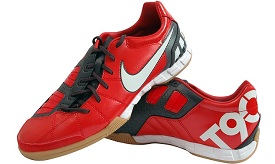 |
Socks − The socks made for Football are very long and they are meant to cover the shin-guards. |
 |
Shin Guards − These are used to protect the player’s shin. While playing football, opponent players try to injure players by kicking in the shin area. It could be an intentional or unintentional act by the player. Hence, shin guards are a protective equipment. |
|
Soccer Ball − This the main equipment of the game and the total game revolves around this. A Football is made of vulcanized rubber with plastic bladders and covered by plastic covers. |
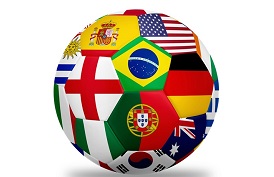 |
Football - Popular Terms
This chapter explains all the popular terms used at play. Some of these are important rules that every football player should be aware of. People following the game closely will find this chapter interesting.
Advantage Rule − This rule is applied when there is no need to stop the play when a foul is noticed by the referee.
Aggregate Score − This is the average score scored by the teams that play in the club competitions. These clubs usually conduct games on the knockout basis. The teams will be paired to play each other twice, one on the home ground of both the teams. The score is then deicide by adding the scores in both the matches.
Attacker − The term referred to a striker and someone who is close to the goal post of the opposing team.
Ball in and out of play − The ball to be passed out of the play must be found outside the sideline or the goal line. It can be played even if it is on the side line. The game continues as long as the ball is in the play.
Bicycle kick − This is a style or a volley where the player kicks the ball over his head while doing a somersault. The player has both his feet off the ground and kicks the ball simultaneously while doing a somersault.
Booter − A term used in the game which means to kick the ball. To boot means to kick the ball very hard, long and high.
Clear − This is used whenever a situation or chance to score a goal arises in the game. The player should immediately clear the ball or kick the ball away from the goal mouth so that a goal can be stopped. Sometimes they even pass the ball or start an attack and other times they just boot the ball out of the play.
Captain − A player who is chosen to lead a team in the match and to deice the toss before the match.
Chip − A high and a long shot hit so that the ball passes over the goalkeeper’s head directly into the goal.
Dead Ball − When the players are stopped and the ball is not moving this is called Dead Ball. Such a situation arises when there is a chance for free kicks and penalty kicks.
Extra time − This is an additional time of play, whenever there is a tie and is played in two halves of 15 minutes to decide the winner.
Foul − A term used to describe the breach of the laws of Football by a player and this can be punishable by a free kick or penalty.
Free Kick − Granting an unobstructed kick to a stationary ball, especially whenever the opposing team makes a foul.
Goalkeeper − A specialized player who is also called as goalie. The work of a goalkeeper is to stop the ball from reaching the goal post behind him.
Hand Ball − The term used when the players use their hand or arm while playing or passing the ball. This is considered to be offensive in the game.
Head − To head the ball means to play the ball with forehead, be it to clear, pass or to score a goal.
Mark − When the game is in the man to man situation, the defender is said to mark the attacker. The farther he is to him the looser the marking and the closer he plays to him the tighter the marking.
Man of the match − A term used for the best player of the game.
Own Goal − A situation where a player unintentionally kicks the ball into his own goal is conceded as own or self-goal.
Pass − An action where a player kicks the ball to his team mate.
Penalty − The situation where a player kicks the ball from the penalty spot and there is only one defender near the goal i.e. the goalkeeper.
Period − Football game is divided into two halves in time; first half and second half.
Pitch − The Football field is called the pitch for easy use.
Referee − The official in-charge of the game. Referee is the final decision maker in the game; he is the one who checks the time and stops the game when it is over. Players cannot enter or leave the field without his consent. It is the responsibility of the referee to see that the game, ball and players all conform to the rules of the game. There are two assistant referees in the game.
Red Card − A decision of the referee where he decides if a player has made an offence and then asks him to leave the game for the remaining duration.
Scissor Kick − To kick the ball forward while the player leans sideways and the ball is kicked in the direction which he is playing. This kick is performed while the player is completely off the ground.
Scoreline − Indication of scores of both the teams which also has the information about the home ground. If the scoreline shows ABC 0 and DEF 2, this means the game is on ABC’s home ground and the winner is DEF with 2 goals.
Tackle − A term used when a player uses his body to take the ball from the opponent, it can be a shoulder charge. Clean tackling means to successfully take the ball from the opponent without a foul.
Time − The Football game is divided into two halves and each half is dedicated to be strictly for 45 minutes in any professional game.
Yellow Card − This is show to the player, warning him that he has committed a serious offence in the match. It is followed by another yellow card in case of another offence and then the red card.
Football - Players & their Positions
Each Football team has 11 players and among these players, 1 is a goalkeeper. Be it the offensive or defensive team, the player’s responsibility is to score a goal for the team and stop the opposing team from scoring a goal.
Goalkeeper − The main aim of a goalkeeper is to stop the opposing team from scoring a goal. The goalkeeper is restricted to the rectangular penalty area which is 18 yards away from the goal and he is the only player in the game who is allowed to use his hands to stop the ball.
Defenders − The defenders are positioned in front of the goalkeeper and their aim is to stop the opposing team from entering into their goal area.
Outside fullback − They play on the left and right flanks and see that the ball doesn’t pass over them. They rarely move from their positions.
Central Defenders − They are positioned in the center of the field and are supposed to cover the leading goal scorer of the opposition’s team.
Midfielders − They are the link between the defenders and attackers. They need to be fit and physically very strong than other players on the field as they are the players who run maximum time of the game all around the field. Their responsibility is to enter the opposing team’s area and see that they defend them when the opposing team retains the ball.
Forwards − Their main aim is to score goals or to create an easy situation for their teammates to score a goal.
Center Forward − The most tactful, dangerous and strong player of the game. They are also called strikers. Strikers are basically the leading goal scorers in the game.
Football - How to Play?
To become a good Football player, the basic and the most important requirement is to be fit, energetic, and tactful. This game needs a lot of running and technical skills in dealing with the ball and the opponent. You have to be a team player and an individual contributor at the same time. To be a Football player, you have to train hard and learn to be faster than your opponent.
Football kick-off
A football match begins with the toss of coin. The match referee and the two captains meet at the center of the field. The captain of the team who wins the toss gets to decide which goalpost to attack in the first half, while the team that loses the toss gets to kick-off to begin the match.
The players take position in their own half of the field. The ball is placed at the center point of the field. Once the referee blows the whistle, a player from the team that lost the toss takes the kick-off, and the ball moves forward. This player cannot touch the ball again till any other player from either team touches the ball. During the second half, the teams switch goals and the team that won the toss gets to kick-off.
Football - Essential Skills
We have listed here a few essential skills that a player should acquire to become a professional footballer.
Learn to dribble − It is the most important act while playing the game. Dribbling means controlling and keep possession of the ball while running. To dribble means to keep the ball with you and your team’s possession, you need to dribble well so that you touch the ball strong enough to move it forward but you should also see that it doesn’t move away very far from you.
Learn to pass − To pass a ball means to move the ball accurately to the place where you want it to be. To pass a ball, you have to kick the ball in a direction where you want it to move. Passing a ball can be done using the inside of your foot, this will give good accuracy and require less power. After learning to pass the ball you can master the act by slicing and hooking the ball to pass it to your teammates.
Learn to shoot − Shooting a ball comes in scene when you are closer to a goal and you need to score a goal. This will need a lot of power and accuracy. You need to set your plantar foot and aim at the goal and shoot the ball.
Taking the right place on the field is very important. Sometimes the player needs to run a lot when he is not near the ball, in this situation the player needs to estimate his teammate’s next move and take the position where his teammate expects him to be.
Learn to defend the goal − The player uses skills to try and get the ball away from the opponent player. The player needs to be focused and should quickly tackle the ball based on the moves of the other player. In some situations, opponent players could trick but the player should constantly keep an eye on the ball and player movements. This way a player can defend the opponent from scoring a goal.
Learn to head the ball − A player uses his forehead to guide the ball in the desired direction and passes it to his teammate. Heading the ball is frequent when scoring a goal after a corner kick.
Learn to juggle − Juggling is not an easy task, but it’s important for a player to learn how to juggle when required. This helps to control the ball when it’s coming in the air as the ball won’t be on the ground every time.
Learn to use the non-dominant foot − It’s very important for a player to learn how to use his non-dominant foot since this can be an advantage for the opposing team if not mastered. Playing with only the dominant foot is playing handicapped. Hence to learn how to use your non-dominant foot is very important.
Learn to be spontaneous and keep your originality − This is the key to master the game. Having an own style of play is a great asset. One should learn to be either tricky, fast, powerful or defensive.
Football - Rules & Regulations
Let’s also understand the rules of the game that are to be followed while playing the game. Listed here are some of the major rules and regulations of the game.
Offside offence is one of the most important rule to follow in Football. It is basically designed so that the players do not cherry pick or bunch a lot of time near the opponent’s goal. A player can be said to be in an offside position when he is in the opponent’s half and also behind the last defender.
Throw-in comes into the game when the ball is either kicked or travels completely outside the field. The chance of throw-in is given to the team which didn’t last touch it. Throw-in can be done from the place where the ball is outside the field. Throw-in means to catch the ball with both the hands behind the head and throw it inside the field.
The yellow card rules − The yellow card is issued to the players by the referee when a player commits a mistake. The referee shows the player yellow warning him of his first mistake. If a player is shown the yellow card twice then he should leave the game permanently. Reason for the referee to show the yellow card −
- The players who play the game disregarding the rules of the game.
- Playing dangerously which means hurting the head of the opponent’s team members.
- Shooting the ball at any player intentionally.
- Goalkeeper violating the rules of the game by passing the ball with hands to his teammates when kicked by them.
- Wasting the time of game intentionally.
The red card rules − The red card is issued when a player is shown the yellow card twice and commits a mistake after that. Reasons for the referee to show the red card to a player are −
- Physically hurting a player by kicking intentionally.
- Intentionally jumping on a player.
- Hitting a player or charging a player roughly.
- Pushing or holding a player.
- Handling the ball incorrectly.
Free kick − These are given as a penalty for the team players when the opposing team makes a foul. There are two types of free kicks −
Direct free kick − In this, the ball can be kicked directly into the goal and it doesn’t need to be passed or touched by the teammate of the kicker.
Indirect kick − In this, the ball must be touched by another teammate of the player who kicks it before scoring a goal.
The rules of penalty kick − A chance for penalty kick arises when a defending team player commits a foul in the opposing team’s penalty box. Except the goalie all the other players must stand in line outside the penalty area. The goalie should stand on the goal line. The ball should be placed on the penalty spot and then kicked.
Corner kick − A chance for the corner kick arises when the ball goes over the goal line but not into the goal and was last touched by the defending team member.
Goal kick − When the ball goes over the goal line but not into the goal and was last touched by the attacking team, the ball will be then moved in to the possession of the defending team and the goalie performs the goal kick.
Football - Tournaments
The biggest and the most famous international tournament of Football is The World Cup which is organized by FIFA. This competition takes place once in every four years. There are approximately 190 to 200 national teams competing to qualify in this tournament. The final which is conducted once in every four years involves 32 teams of different nations competing one another for over 4 week’s period.
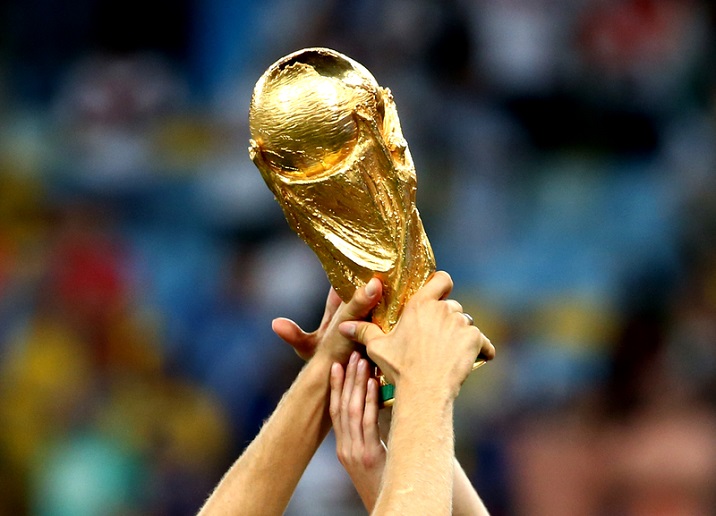
The next FIFA World Cup will be the 21st World Cup and it is scheduled to take place in Russia from June-July, 2018.
Tournament
After the World Cup, other most famous and prestigious tournaments are the continental championships which are organized by the confederations of these continents. They are −
- European Championship (UEFA)
- The Copa America (CONMEBOL)
- African Cup of Nations (CAF)
- The Asian Cup (AFC)
- The CONCACAF Gold Cup
- The OFC Nations Cup (OFC)
There is another tournament called FIFA Confederation Cup which is conducted between the winner of all the above mentioned six continents, the current World Cup champions and the country which is hosting it.
Irrespective of these tournaments, there are many champions league tournaments conducted between the Football clubs and the 10 most famous Football clubs among them are −
| Club | Country |
|---|---|
| 1. Barcelona | Spain |
| 2. Real Madrid | Spain |
| 3. Juventus | Italy |
| 4. Bayern Munchen | Germany |
| 5. Chelsea | England |
| 6. Sevilla | Spain |
| 7. Manchester United | England |
| 8. Arsenal | England |
| 9. Liver Pool | England |
| 10. Milan | Italy |
Football - Champion of Champions
Football is a team sport; however, one player’s brilliance to score the goal gets their team to win. The sport has seen some of the best players over decades. Tackle, attack, shoot, and score past the goal post are collective skill sets of champion players. Here is a list of best football players with a brief look at their stats.
Pele alias Edson Arantes do Nascimento is a great Brazilian footballer. He holds the record for being the youngest player to score in the World Cup. At the age of 17, he opened the goal count against Wales in 1958. Since then, there was no looking back for him. He represented Santos at club level since 1956 and called quits to the game in 1977. He is fondly called as "The King of Football", and port city Santos celebrates November-19 as Pele day that marks the day he scored his 1000th goal. |
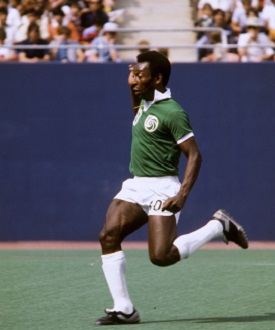 |
George Best Born in Northern Ireland, George Best, was one of the finest and greatest players of all time. He was equaled with Pele during his playing days. He debuted for Manchester United club at 17. Speed, skill, and aggressive style of play were his attributes. However, his off-field liaisons and lifestyle were too much for a club like Manchester United to accept. Hence, he was dropped from the team and later injuries forced him to quit the game at a very early age of 27. Unfortunately, this legend never got an opportunity to represent his country on bigger stage. |
|
Diego Maradona Speed with technique and a magical left-foot made Argentine football player, Diego Maradona, a legend. He was called "The Golden Boy of Football". He started playing football at the age of 15 for Argentinos Juniors club. Later, he played for Barcelona, Sevilla, and Napoli clubs. He made headlines when he scored a controversial hand-ball goal in 1986 World Cup final. He scored 34 goals for the national side during his 17-year long career. |
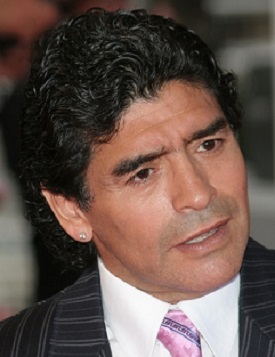 |
Ronaldo The Brazilian striker was considered next to Pele in legends of the game. He took part in four World Cup finals and won twice. Ronaldo is the second highest goal scorer for his nation with 62 goals. He is one amongst the players who won FIFA World Player of the Year three or more times. Ronaldo won Ballon d’Or twice, once in 1997 and again in 2002. Barcelona, Real Madrid, Inter Milan, and PSV are few popular clubs that he played for and finally retired in 2011 after a long streak of injuries. |
|
David Beckham Bend it like Beckham! The popular saying was coined with reference to Beckham’s style of bending free-kicks. He was known for his accurate passing and creating opportunities for strikers to net the ball. Beckham started playing professional football at the age of 17 for Manchester United. He captained England for six years. In his 20-year long career, he represented top clubs like Real Madrid, LA Galaxy, and PSG other than Manchester United. Off the field, he was also popular for his stylish lifestyle and charity. He retired from professional football in 2013. |
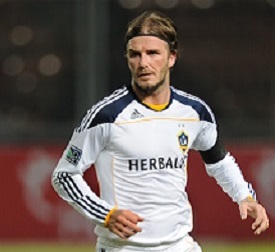 |
Lionel Messi After Maradona from Argentina, Messi is considered as his successor in football. Lionel Messi born in 1987 started playing professional football at a very young age and has already played three World Cups. Speed, technique, and intelligent play are his prime attributes. Alike Maradona, Messi is also known for his free kicks with left foot. He is yet to win the World Cup for his national team. Currently, he plays for Barcelona at club level and holds almost every club record. Most geniuses of the game have rated him as the best footballer ever. Lionel Messi has won top FIFA award three times and Ballon d’Or four times (2009, 2010, 2011, 2012), which is the highest for any player till date. |
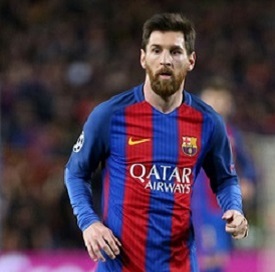 |
Cristiano Ronaldo The Portuguese football player was born in 1985 and started playing professional football at the age of 12. His heroics soon became known globally and the manager of Manchester United roped him for season of 2003-04. Accurate passing, excellent chop and scissor moves are a couple of his exceptional football playing skills. At club level, he is currently playing for Real Madrid and Manchester United was his former. He is believed to be the best finisher of all time by greats. He held the record for highest number of goals in European championship for a long time until Messi broke it. |
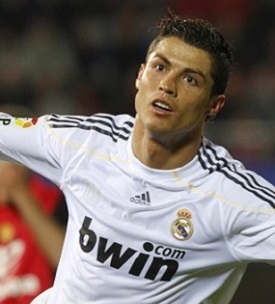 |